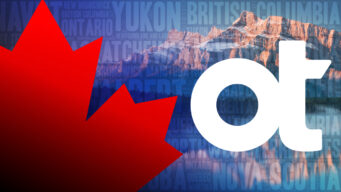From scrolls to print, from hardback to paperbacks, from broadsheets to tabloids, and from print to digital, the world of publishing has always been one of change.
What makes the current landscape different is the sheer rate of change. This time it’s not only the delivery model that’s changing, and changing fast, it’s also the combination of new technologies and the demand for information consumed across a variety of different media.
While traditional print markets are at last showing slow recovery in some markets the demand for information via digital sources continue to grow (although it could be argued that this growth is slowing down), while other media, such as video and audio continue to gain in popularity.
From my perspective I see five primary influences that are driving this change in the publishing landscape:
- Channel growth: The move from having a single delivery channel, i.e. print, to multiple digital mobile channels on the web and mobile is moving news and information delivery from a traditional, single stream publishing model towards a model closer to broadcasting, with subsequent pressures to create and deliver differentiated content for each channel while maintaining the core integrity and facts of the information being delivered.
- Speed of updates: It used to be sufficient to publish on a regular pre-determined cadence, be it quarterly, monthly, or weekly in the case of magazines; or weekly, daily, or in selected editions (morning, lunch, evening, and late) for newspapers. Today, a large proportion of the population gets its first notification of a newsworthy event via social media and expects updates to be in real time as events unfold. To compete with this, news organizations must deliver their own content via social media and back it up with deeper analysis via news websites and more traditional channels that take longer to deliver.
- Changing business model: The newspaper industry has traditionally been funded by revenue streams from print advertising, i.e. selling physical space alongside the content. In this scenario the content is secondary to the advertising, although it could be argued that good content drives up circulation, which allows the publication to charge higher rates for the associated space. In the digital world, while it is possible to sell advertising space, it is at lower price points and less effective than in print. As a result, advertising revenues have dropped significantly and news and information providers are looking at other revenue streams, such as leveraging their content through paywalls, and syndication. To date, no new single business model has emerged as the new baseline.
- Easy access to different media types: While print was once the predominate media for the dissemination and consumption of news and information, it is now just one of a number of choices. With the advent of digital mobile devices, most consumers now have ready and instant access to content in textual, visual (graphics and video), and audio format. While print is never likely to disappear completely, it is now supplemented by the steady growth of other media types.
- Impact of technology companies: The majority of digital advertising revenue is generated by five technology companies, four of which, Google, Yahoo, Facebook, and Twitter include news content. The impact of these companies goes beyond such financial considerations, as more of them onboard editorial staff and start to change the way that news is delivered and tracked through a combination of more personalized storytelling techniques and trending topics.
Digital transformation is key to survival in the publishing industry. However, any digital efforts must not only address the process of delivery, they must also address the new paradigm where content becomes the hub of the business model.
It is no longer sufficient just to automate the original print process model using technology, it is now essential to leverage content assets to deliver compelling and engaging stories that can be accessed from any platform, from print to digital, to mobile, to social, at any time.



